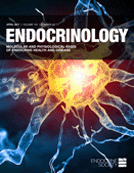miquelangeles
Member
- Joined
- Mar 18, 2021
- Messages
- 928
ABSTRACT.
The ability of Sertoli cells to metabolize progesterone to testosterone (T) and 5a-dihydrotestosterone (DHT) was investigated in vitro. Cultures of Sertoli cells isolated from testes of 80-day-old rats were incubated with [7(n)-3 H]progesterone (10/iCi/3.0 nmol) for 0.5, 1, 2, and 3 h. The amount of progesterone converted to T, androstenedione (A), DHT, 17a-hydroxyprogesterone, and 20a-dihydroprogesterone was calculated on the basis of crystallization data. The amount of substrate converted to the various steroids increased between 0.5-3 h of incubation. During this period, T increased 6-fold; A, 2-fold; DHT, 4-fold; 17a-hydroxyprogesterone, 3-fold; and 20a-dihydroprogesterone, 12- fold. The amount of substrate converted to C-19 steroids (T, A, and DHT) increased linearly with time; 19.4 ng androgen/1 x 106 cells were formed within 3 h, the largest amount (11.83 ng) being DHT. Although the amount of 3H-labeled C-19 steroids formed from [3 H]- progesterone by Sertoli cells is relatively small (1.8% conversion) compared to T formation by whole testicular tissue or by isolated interstitial cells, the ability of Sertoli cells to form T and DHT from progesterone may be physiologically important in the local regulation of Sertoli cell function and spermatogenesis. (Endocrinology 103: 1335, 1978)

Progesterone Metabolism by Cultured Sertoli Cells*
The ability of Sertoli cells to metabolize progesterone to testosterone (T) and 5α-dihydrotestosterone (DHT) was investigated in vitro. Cultures of Sertoli cell
